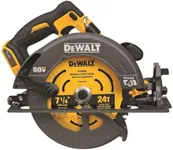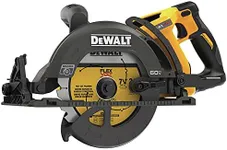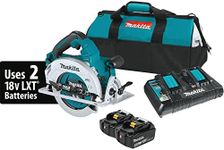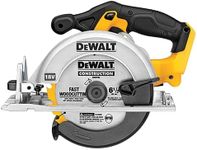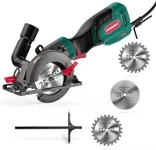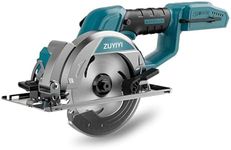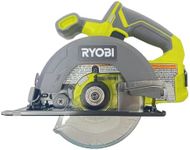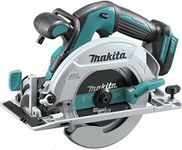Buying Guide for the Best Cordless Circular Saws
Choosing the right cordless circular saw can make a significant difference in your woodworking or construction projects. These tools offer the convenience of portability and ease of use without the hassle of cords. To find the best fit for you, it's important to understand the key specifications and how they align with your needs. Here are the main specs to consider when selecting a cordless circular saw.Battery VoltageBattery voltage determines the power of the saw. Higher voltage means more power, which is essential for cutting through tougher materials. Common voltages range from 12V to 60V. For light-duty tasks, a 12V to 20V saw may suffice. For more demanding jobs, such as cutting thick hardwoods, a 36V to 60V saw would be more appropriate. Consider the types of materials you'll be working with to choose the right voltage.
Blade SizeThe blade size affects the depth and type of cuts you can make. Standard blade sizes for cordless circular saws are 5-1/2 inches to 7-1/4 inches. Smaller blades are lighter and easier to handle, making them suitable for quick, light cuts. Larger blades can cut deeper and through thicker materials, which is ideal for heavy-duty tasks. Think about the thickness of the materials you plan to cut when selecting the blade size.
RPM (Revolutions Per Minute)RPM indicates how fast the blade spins. Higher RPMs mean faster cutting speeds and smoother cuts. Typical RPM ranges for cordless circular saws are between 3,000 to 5,000 RPM. For general-purpose use, a saw with around 3,500 RPM is usually sufficient. For more precise and faster cuts, especially in harder materials, look for a saw with higher RPMs. Match the RPM to the precision and speed you need for your projects.
Bevel CapacityBevel capacity refers to the saw's ability to tilt and make angled cuts. Most cordless circular saws offer bevel capacities between 0 to 50 degrees. A higher bevel capacity allows for more versatility in cutting angles. If you frequently need to make bevel cuts, such as for trim work or complex carpentry, a saw with a higher bevel capacity will be beneficial. Consider the types of projects you undertake to determine the necessary bevel range.
WeightThe weight of the saw affects its portability and ease of use. Lighter saws are easier to handle and reduce fatigue during extended use, making them ideal for overhead or one-handed cuts. Heavier saws, while more cumbersome, often provide more stability and power. If you need a saw for quick, light tasks, a lighter model is preferable. For more substantial, continuous work, a heavier saw might be more suitable. Balance the weight with the duration and type of your tasks.
Battery LifeBattery life determines how long you can use the saw before needing to recharge. Longer battery life is crucial for extended projects without frequent interruptions. Look for saws with high-capacity batteries, typically measured in ampere-hours (Ah). Batteries with 4Ah or more are ideal for longer use. If your projects are short or you have access to multiple batteries, a lower capacity might be sufficient. Assess the duration of your typical tasks to choose the right battery life.





